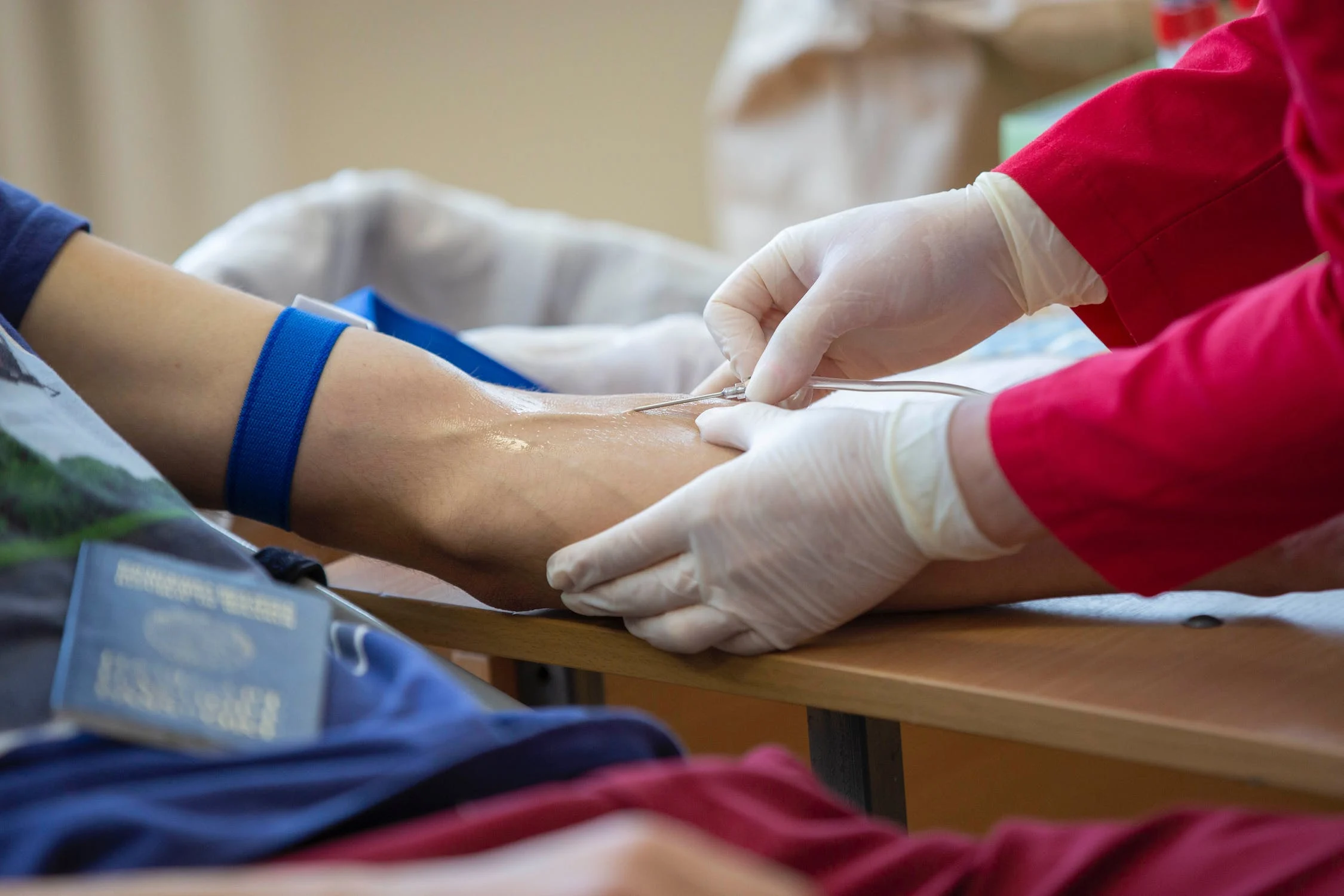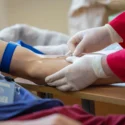
09 Jun What Are the 4 Most Common Veins Used in Phlebotomy?
This article is for informational purposes only and is not a substitute for professional medical advice, diagnosis or treatment. Contact a qualified medical professional before engaging in any physical activity, or making any changes to your diet, medication or lifestyle,
When you are giving blood you might be told that you have problematic veins that are either hard to locate or too thin. This can make it much more challenging to draw out the blood required.
With the right level of phlebotomy training a medical professional tasked with drawing a blood sample from a problematic patient will be able to overcome these issues by understanding how to locate the most commonly used veins and manage any potential risks.
Here is an overview of the procedures used to find a vein in order to draw blood, what normally happens when it has not been possible to find the vein, and which veins phlebotomists regularly use for blood draws.
Finding a suitable vein to draw blood
 The vast majority of veins are not visible to the naked eye. It may be necessary to palpate the arm to help find a problematic vein.
The vast majority of veins are not visible to the naked eye. It may be necessary to palpate the arm to help find a problematic vein.
The art of being able to make a distinction as to what is a viable vein and what is not simply by feel is a skill that is critical for any phlebotomist.
A good example of how skill and experience can make such a difference when it comes to the art of phlebotomy is when using a tourniquet to anchor a vein. The right amount of pressure is needed to get a good draw and the best test results.
If the tourniquet is too tight it could lead to a loss of plasma. This could have a negative impact on the accuracy of the test results.
Illuminating the vein could help with accurate location. Warming the target area with a heating pad is also something to improve vein visibility.
Most common veins used in phlebotomy
There are four specific sites that a phlebotomist will often use for blood draws. Although each vein offers a viable source of blood there are risks attached to each option.
The Cephalic vein is located in the lateral section of the arm. It is one of the most commonly used options and a common draw site choice for phlebotomists.
The first choice of targets is usually the Median Antecubital vein. It is the vein that is located in the inner arm at the elbow joint. One of the primary reasons this is the first choice for phlebotomists is that it is one of the most prominent. It also tends to cause minimal pain for patients when carrying out a blood draw.
The Basilic vein is located on the medial side of your arm. One of the reasons why this is a secondary option behind the Median Antecubital and Cephalic vein is that it is an area that is difficult to anchor. That heightens the risk of the vein rolling or collapsing.
Dorsal hand veins are often the least likely vein to target for drawing blood. They are located between the wrist and the thumb of your hand. It is an option that can be successful but the other three vein options tend to be where a phlebotomist will focus their attention.
It is likely that a trained phlebotomist will often ask if a certain vein or target area has worked previously. Having this knowledge could save time and make the process of giving blood less stressful, even when drawing it is a challenge.
The information on MedicalResearch.com is provided for educational purposes only, and is in no way intended to diagnose, cure, or treat any medical or other condition. Always seek the advice of your physician or other qualified health and ask your doctor any questions you may have regarding a medical condition. In addition to all other limitations and disclaimers in this agreement, service provider and its third party providers disclaim any liability or loss in connection with the content provided on this website.
